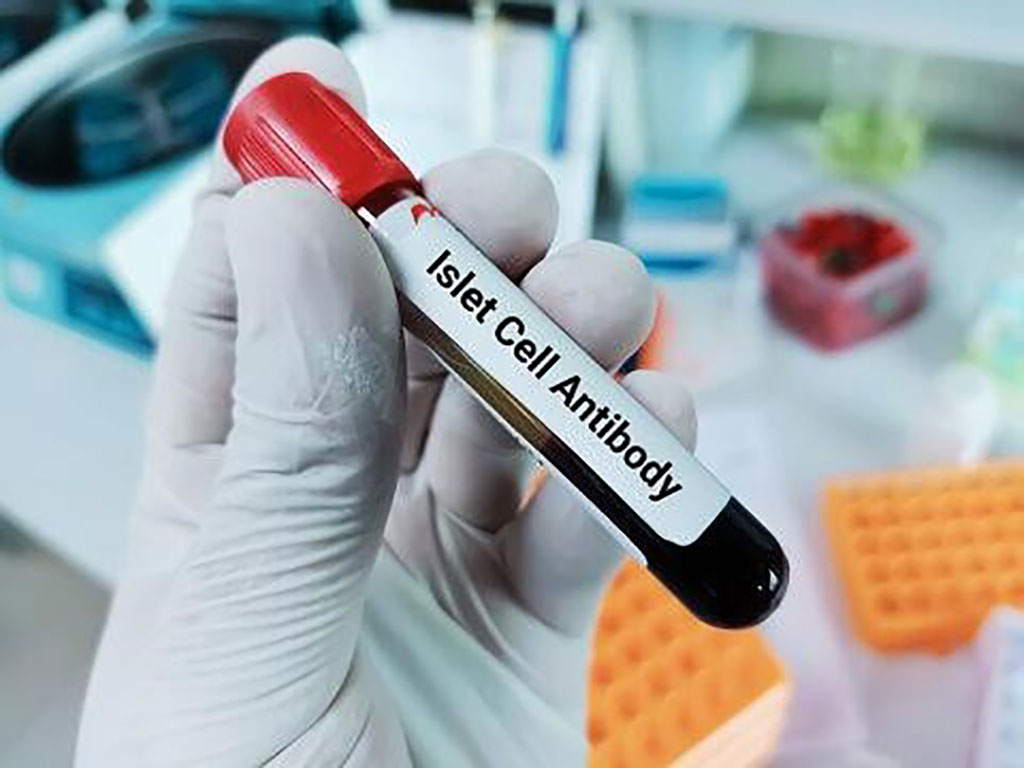HOMA2-B Assessed for Type 1 Diabetes Risk
By LabMedica International staff writers
Posted on 26 Jan 2022
Methods to identify individuals at highest risk for type 1 diabetes are essential for the successful implementation of disease-modifying interventions. Simple metabolic measures are needed to help stratify autoantibody-positive (Aab+) individuals who are at risk of developing type 1 diabetes.Posted on 26 Jan 2022
The Homeostasis Model Assessment (HOMA) estimates steady state beta cell function (%B) and insulin sensitivity (%S), as percentages of a normal reference population. These measures correspond well, but are not necessarily equivalent, to non-steady state estimates of beta cell function and insulin sensitivity derived from stimulatory models such as the hyperinsulinemic clamp, the hyperglycemic clamp, the intravenous glucose tolerance test (acute insulin response, minimal model), and the oral glucose tolerance test.

Image: The Homeostasis Model Assessment (HOMA) may have utility as a single-time-point measurement to stratify risk of type 1 diabetes development in autoantibody-positive individuals (Photo courtesy of Adobe Stock)
A team of clinical scientists at the Indiana University School of Medicine (Indianapolis, IN, USA) enrolled in the TrialNet Pathway to Prevention study and measured baseline HOMA2-B values from single- autoantibody-positive (Aab+) 2,652 individuals (mean age, 21.1 ± 14.0 years) and multiple-Aab+ 3, 794 individuals (mean age, 14.5 ± 11.2 years). Cox proportional hazard models were used to determine associations between HOMA2-B tertiles and time to progression to type 1 diabetes, with adjustments for age, sex, HLA status and BMI z score. Receiver operating characteristic (ROC) analysis was used to test the association of HOMA2-B with type 1 diabetes development in 1, 2, 5 and 10 years.
The investigators reported that at study entry, HOMA2-B values were significantly higher in single- compared with multiple-Aab+ participants (91.1 ± 44.5 versus 83.9 ± 38.9). Single- and multiple-Aab+ individuals in the lowest HOMA2-B tertile had a higher risk and faster rate of progression to type 1 diabetes. For progression to type 1 diabetes within 1 year, area under the ROC curve (AUC-ROC) was 0.685, 0.666 and 0.680 for all Aab+, single-Aab+ and multiple-Aab+ individuals, respectively. When correlation between HOMA2-B and type 1 diabetes risk was assessed in combination with additional factors known to influence type 1 diabetes progression (insulin sensitivity, age and HLA status), AUC-ROC was highest for the single-Aab+ group’s risk of progression at 2 years (AUC-ROC 0.723).
The authors concluded that the data suggest that HOMA2-B may have utility as a single-time-point measurement to stratify risk of type 1 diabetes development in Aab+ individuals. The study was published in the January 2022 issue of the journal Diabetologia.
Related Links:
Indiana University School of Medicine














